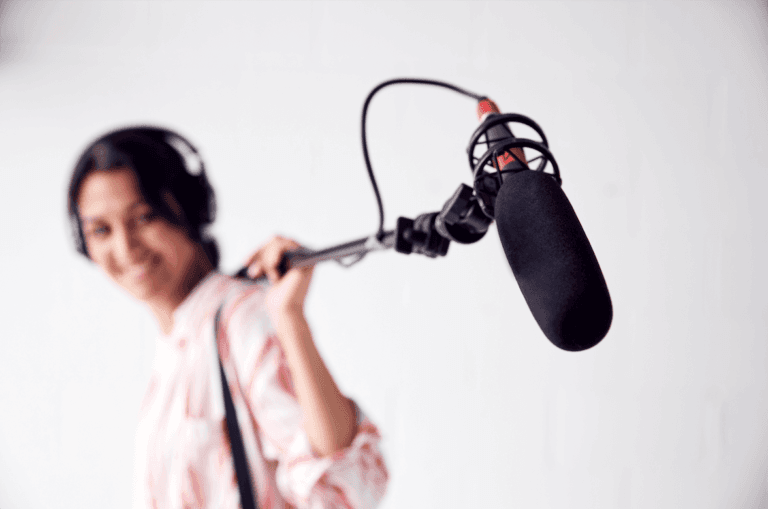Learn how microphone choice and recording environment influence audio quality. Essential tips for achieving professional sound in your videos.

To ensure good audio quality in your videos, choosing the right microphone and taking care of the recording environment are essential. These two elements have a direct impact on the sharpness and clarity of the sound, and can transform the final result of any audiovisual production. In this article, we will discuss how choosing the right microphone and recording environment can improve the audio in your videos.
Choosing the right microphone depends on the type of production and recording environment. Here are the most common types and their applications:
In addition to choosing a microphone, the recording environment is crucial to ensuring clean audio without unwanted noise. Here, we need to understand the difference between soundproofing and acoustic treatment.
Soundproofing is important to keep out external noise, but acoustic treatment is essential to ensure that the sound captured is of high quality within the space. It is not always possible to completely isolate the environment, so prioritizing acoustic treatment can help mitigate many sound issues, especially in improvised locations. Additionally, directional microphones, such as shotgun microphones, can help minimize the impact of unwanted sounds in the environment.
For effective acoustic treatment, it is important to consider materials that absorb sound reflections, such as acoustic foam, heavy curtains, and diffusion panels. Carpets and furniture can also help reduce unwanted echoes and reverberations. Another affordable solution is to use acoustic blankets or heavy blankets to reduce the impact of external noise, especially when recording at home.
When choosing a recording location, choose environments with fewer reflective surfaces, such as glass walls or tile floors, which can generate excessive reverberation. If possible, test recording short audio samples before the official recording to adjust microphone placement and reduce interference.
Another essential technique is to position the microphone correctly in relation to the sound source. Maintaining an ideal distance and avoiding placing the microphone too close to surfaces that reflect sound can ensure cleaner, distortion-free audio.
Choosing the right microphone and taking care of the recording environment are essential to ensure that your video has high-quality audio. Knowing how to balance isolation and acoustic treatment will ensure that the recorded sound is clean and clear, without interference. Silvertake Video, we offer technical support to ensure your videos have the best possible audio quality. Get in touch to find out more!
Request a Quote